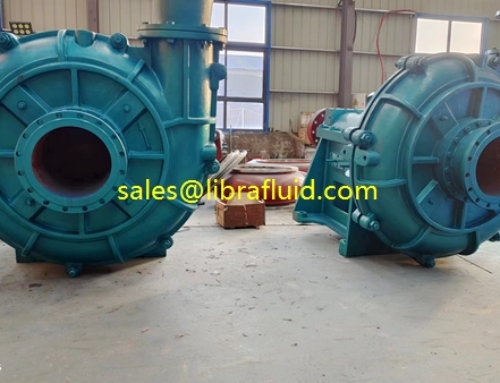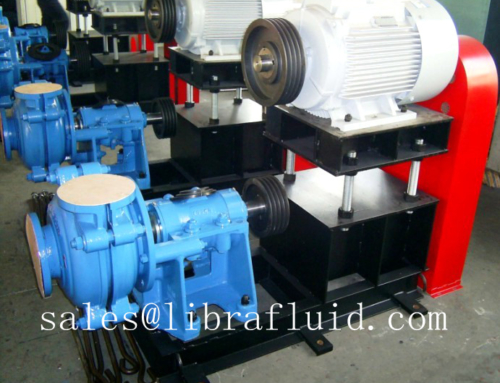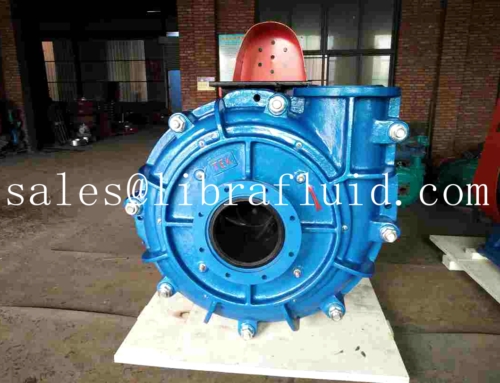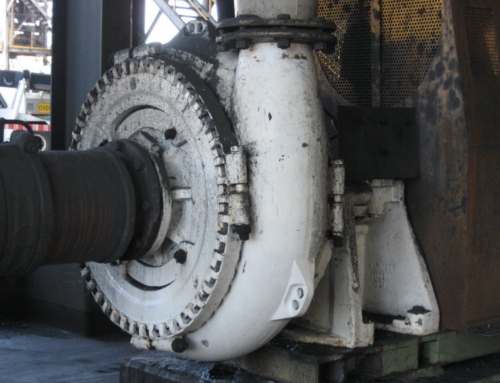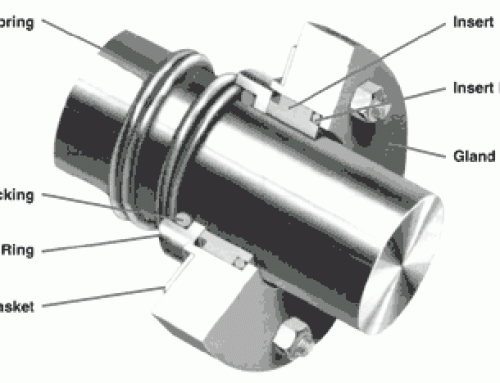If you find that your present centrifugal pump is not satisfying your application and running as trouble free as you’d like, and you’ve checked:
All of the internal tolerances are correct.
There is no excessive pipe strain.
The open impeller has been adjusted to the volute or backplate after the pump came up to operating temperature.
The pump to driver alignment was made.
The rotating parts were dynamically balanced.
The wear ring clearance is within manufacturers specifications.
The pump is running at the correct speed, in the right direction, with the correct size impeller.
There is no evidence of cavitation.
There is no evidence of corrosion.
Then you may have to purchase a different centrifugal slurry pump, or you might want to consider modifying the existing pump to get the performance and reliability you are looking for.
Here are a few modifications and pump upgrades you can consider:
Modifying the slurry pump impeller diameter could get you closer to the best efficiency point. The affinity laws will predict the affect the trimming will have on the pump’s head, capacity, net positive suction head required (NPSHR), and horsepower requirement.
Converting to an impeller with a different specific speed number will change the shape of the pump curve, power consumption and the NPSH required.
Changing to a heavy duty power end can stop a lot of shaft deflection, and with some pump manufacturers give you the pilot diameter you need to install a “C or D” frame adapter to eliminate pump alignment.
Converting from a sleeved to a solid, corrosion resistant shaft will often reduce or stop shaft deflection problems caused by operating off the best efficiency point (BEP).
If you’re using mechanical seals be sure that you are using the type that prevents fretting corrosion. Most original equipment manufactured (OEM) seals damage shafts, and that is one of the main reasons they supply a sacrificial sleeve.
Reducing the overhung shaft length can solve many shaft deflection problems. You should be able to get the L3/D4 number down to less than 60 (2,0 metric) by either reducing the shaft length or increasing the shaft diameter.
Changing the wet end to a double volute configuration will allow the pump to operate in a larger window without the danger of deflecting the shaft too much.
You can drill a hole in the end of the stuffing box, at the top, to increase stuffing box venting.
Change the flushing or recirculation connection from the top lantern ring connection to the bottom of the stuffing box to insure a better fluid flow through the stuffing box. Try to get close to the seal faces.
Enlarging the inside diameter of the stuffing box, or going to an oversize stuffing box can solve some persistent seal problems.
Converting the wet end of the pump to a centerline design might solve some pipe strain problems by compensating for radial thermal growth.
Increasing the impeller to cutwater clearance, could stop a cavitation problem
Installing a sight glass in the bearing case can help you maintain the correct oil level and prevent overheating problems in the bearings.
Replacing the bearing case grease or lip seals with either labyrinth or positive face seals for bearings will keep moisture out of the bearing case and eliminate a lot of premature bearing failure.
Converting the radial bearing retention snap ring to a more rugged holding device will eliminate many of he problems associated with axial movement of the shaft.
Converting the packed pump to a good mechanical seal will reduce power consumption and product leakage.
Converting solid mechanical seals to split mechanical seals can reduce the time it takes to change seals and eliminate the need for re-alignment. It will also prevent the need for other trades to become involved in the process of disassembling the pump and bringing it to the shop.

